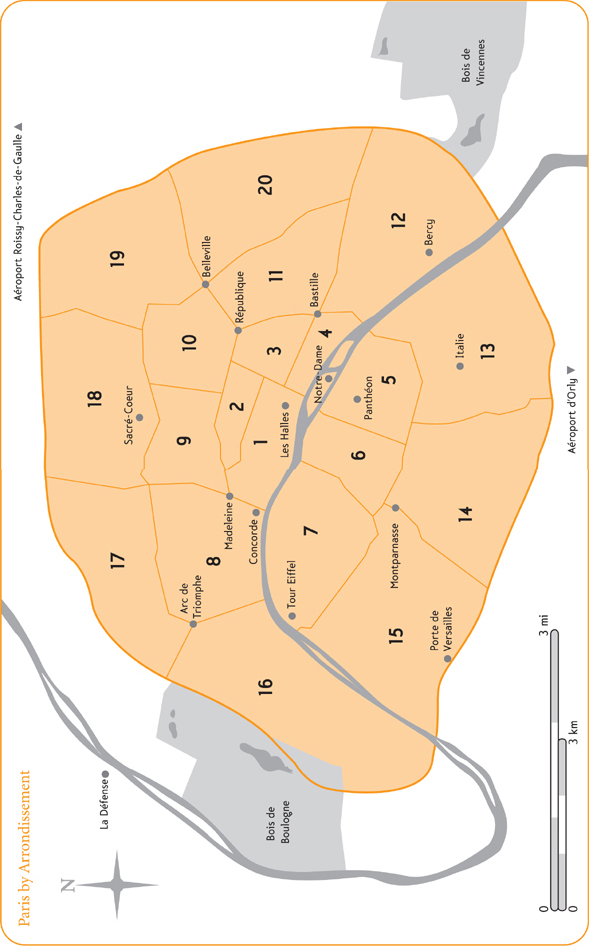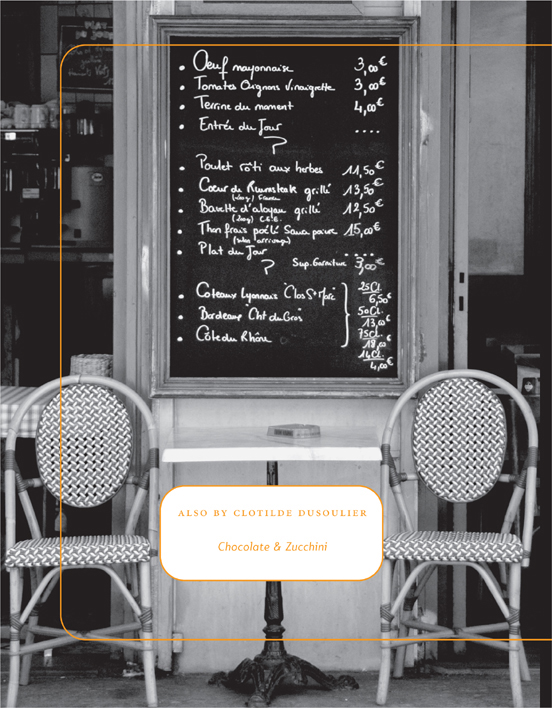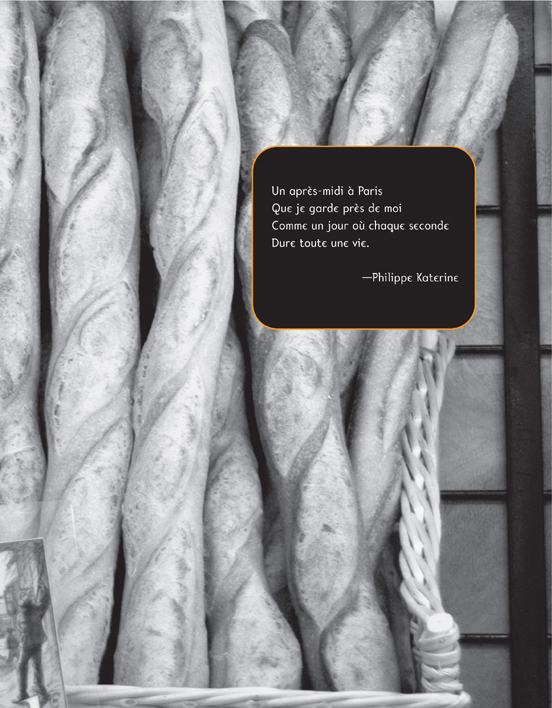My Paris lists are especially copious, as I eagerly collect recommendations, tips, and news from multiple sources, then trek around the city to see, smell, and taste for myself. And when I find a gema shop that sells honey on tap or artisanal beer, a restaurant that serves superb oysters or handles game exceptionally wellI love nothing more than spreading the word about it, allowing my friends and readers to enjoy it, too. In dining as in cooking, I don't believe in hoarding secrets.
This book is a window onto my Paris, this delicious stomping ground for the food enthusiast. It is the companion I wish I had for every city I visit, pointing me to the edible highlights and giving me the lowdown on the dining scene, the best food shopping haunts, and the locals' favorites.
I hope it finds its place on your nightstand, as you plan your future (or perhaps imaginary) trip to Paris, and in your pocket, as you walk around the City of Light and Good Food and munch on its endless wonders.
HOW TO USE THIS BOOK
T his volume is divided into two main sections. The first one, EATS, takes you around restaurant favorites: they are odered alphabetically by arrondissements (Paris's twenty districts). (Note: when the name of a restaurant begins with Le, La, Les, Chez, or Aux, the leading article is ignored.) In the second section, SHOPS, recommendations are organized by specialtybread, pastries, wineand, within each specialty, by arrondissement.
Telephone numbers are given in the format they should be dialed when you're in France. To call from the States, replace the leading zero with 011 33. (For example, if the phone number is 01 23 45 67 89, dial 011 33 123 45 67 89.)
If multiple locations are listed for the same business, the first one is either the historical location or the one that most warrants a visit. The nearest mtro stations are listed after the M sign, as well as the closest cross street.
Terrace space is a rare commodity in this city, but some restaurants do offer a handful of sidewalk tables that Parisians dart to at the first sign of balmy weather. Outdoor seating is noted for these establishments.
Restaurant menus change often, to reflect the season and the inspiration of the chef, so the dish examples are simply included for illustration purposes, to give you an idea of the style of cuisine.
The hours listed for restaurants are service hours, i.e., the time periods during which diners can come in and be seated; the dining room remains open for a couple of hours after that. For stores, the hours listed are actual hours of operation.
Business slows down drastically in July and August: most shops and restaurants close for three to four weeks for their congs annuels, and those that remain open often switch to a more limited summer schedule, with fewer opening daysMondays and Sundays are the first to get nixed.
All practical details in the book were double-checked for accuracy, but they are, of course, subject to change. Prices in particular tend to creep up by a euro or two when no one's looking, and days and hours of service are sometimes loosely interpreted: it is not infrequent to drop by a store within the hours of operation and find a hastily written sign on the door that reads "Je reviens" (back later), or even a good old "Fermeture exceptionnelle" (sorry, we're closed). If you're planning a ride all the way across the city to visit a specific place, consider calling ahead to make sure that it is, indeed, open.
Log on to Chocolate & Zucchini to check for updates and corrections, and if you have changes of your own to report, they will be very welcome.
ACKNOWLEDGMENTS
L et me first raise my glass to my favorite dining companions without whom table-hopping and bread-breaking wouldn't be half as fun: Maxence, Alisa, Caroline, Cline, Estrelle, Laurence, Marie-Laure, Meredith, Pascale, Patricia, and Stephan, Shelli, adnd Gene, and my parents.
I would like to thank the chefs who have shared recipes for this bookSbastien Gaudard of Dlicabar, Stphane Mol of Les Ormes, Rmi Van Peteghem of Le Sensing, Dominique Saugnac of Boulangpicier, Christophe Vasseur of Du Pain de des Ides, Antoine Westermann of Drouantand Mary Sue Hayward, my recipe tester extraordinaire, who has helped adapt these recipes for cooks like you and me.
Thank you, also, to the Broadway Books teamJennifer Josephy and Tammy Blake in particularfor supporting my work, and to Claudia Cross, for being the best agent I could dream of.
Finally, thank you Paris, for letting me traipse around your streets, and providing inspiration at every turn. I feel lucky to know you.


PART ONE
eats
W hen it comes to eating out in Paris, the difficulty lies not so much in finding a good restaurantthere is no dearth of thoseas in deciding what you feel like, in your heart of hearts. A glass of wine and a few nibbles? A wholesome bistro meal? A creative take on French classics? A colorful salad? A four-hour gastronomic extravaganza? A crisp, golden crpe? A cup of tea and a pastry?
Whatever the itch, this book should include a restaurant to scratch it. I have strived to put together a selection that covers a wide variety of occasions, moods, appetites, and budgets within eight categories:
LUNCH . For a quick, light mealsoups, salads, sandwiches, savory tarts, and simple plats du jour. These restaurants are usually open during the daytime only, and in most cases, no table service is provided: you order and pay at the counter, then take your purchases to go ( emporter) or sit down at a table to eat them (sur place). No reservation necessary. Dress code: come as you are.
CASUAL . For traditional Frecn cuisine in a laid-back and often bustling atmosphere. Expect little room between tables and hectic service. Dress code: casual.
NEO BISTRO . For bistro food taken to a new level. The ambiance is casual, but there is serious action in the kitchen as the chef revisits the classics with creative riffs. See for more on the neo bistro trend. Dress code: casual-chic.









